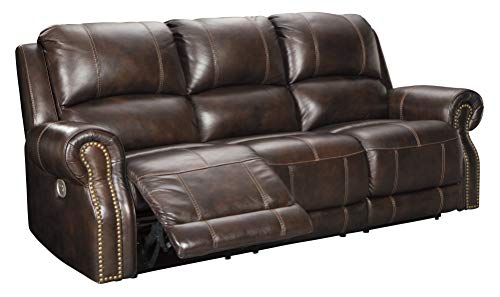The 12 Worst Types Of Tweets You Follow
How to Spot a Genuine Leather Sofa
This sofa is a great option for any room. Its leather upholstery is buttery soft. Customers adore its simple styling and high-quality genuine leather upholstery.
However, distinguishing real leather from fake leather can be difficult to the untrained eye. Here are six suggestions to help you distinguish between the two types: 1. Edges that are rough.
1. Check the label
Genuine leather is difficult to duplicate. It has a distinctive appearance and feel. It is also durable, easy-to-clean, and doesn’t absorb excessive body oils. This makes it a great choice for people suffering from allergies. Not all leather sofas are made equal. In fact, some retailers have been known to misrepresent PVC as genuine leather.
Understanding the different types of leather can help you avoid being ripped off. This includes determining top-grain and full grain leather, and also evaluating the quality of the upholstery. Discerning retailers will be more than willing to share this information So don’t hesitate inquire!
To determine if you have a genuine leather sofa, you must first examine the label. The label should clearly identify the kind of leather used to cover the sofa as well as any other materials such a fabric or cotton. A reputable supplier must also have clear guidelines regarding exchange or return if you are not satisfied with the purchase.
If the sofa doesn’t have a label, you can still confirm its authenticity by examining the upholstery’s fabric backing or by opening the cushion casing. You can also check the texture of the leather to see if there are any bumps or imperfections. These are indicators that the leather is fake or has been bonded.
Another way to check the integrity of a sofa is feeling its surface by rubbing your fingers. Genuine leather has a smooth, soft texture. Faux leather or bonded leather is more coarse and feels like suede. In addition, you should be able to feel a difference between the bumps and wrinkles of genuine leather and the patterns printed on faux leather.
A genuine leather sofa is more expensive than its imitation counterpart, but it will last longer. It can become an important family heirloom with time. You can reduce the damage that’s caused by sun or ozone, heat, humidity by placing your leather sofa in a cool, dark area away from fireplaces, heaters and air conditioners. Additionally, you can use leather protection creams to keep your sofa supple and sturdy.
2. Take a look at the back
If the label doesn’t tell you what type of leather is used in a sofa, it’s important to inspect it up close. The smell, texture and the backing will be unmistakable indicators of authenticity.
Genuine leather may not feel smooth when you contact it. This is due to the fact that animal hides have a variety of pores that allow it to breathe. A product that feels totally smooth may be fake leather.
Check for bumps or uneven surfaces. The preparation of genuine leather involves buffing, which takes away some of the rough outer skin. However, if the material you use to cover your sofa is top-grain leather it should still be bumpy.
You can also test the leather by putting your fingers into it and then running it across it. If the leather is genuine, it will stretch and wrinkle just like human skin. This means it’s capable of breathing, ensuring that the leather does not become dry and cracked over time.
Faux leather is printed and therefore has a uniform pattern, while genuine leather will have natural imperfections that add to its beauty and durability. This includes creases, scratches and scars. A quality leather sofa will be supple, a little stiff when new, but it should not crack or dry out in time if it’s conditioned regularly with a special leather protection cream.
To save money, certain furniture manufacturers make use of a mix of real and synthetic leather to make their products. The ‘contact’ areas, such as seats and armrests as well as backs, are made from real leather, whereas the non-contact parts like the outside and base arms are upholstered with a less-expensive polyurethane- or leather-like-synthetic fabric. Even if the sofa is labeled as genuine leather, take a close look at the backing to determine if it’s genuine leather.
Labels and prices can point you in the right direction, but to ensure that a sofa is genuine leather it’s essential to get up close and personal with it. Smell it, touch it and check its back for a polyurethane backing that is a clear indicator that it is not genuine leather.
3. Take a look at the seat
The seat of a genuine leather sofa is a further indicator of its quality. While many faux leather couches use various materials for upholstery authentic leather has a distinct texture that is smooth to the touch. It isn’t entirely uniform in color and shade. Be aware of bumps on the surface as well as a deep leather couch natural, fresh scent. These features distinguish genuine leather from imitations or cheap leather.
Another sign of a bad sofa is when the leather is stitched in a large, continuous piece. Although this isn’t uncommon with faux leather, if you see this with real top-grain leather, it’s likely a sign that the sofa isn’t of high-quality and should be avoided.
Pricing and labels may provide a clue, but the only way to be sure is to get up close to the furniture. Genuine leather isn’t perfect, and it will feel rough to the feel. It will also have rough edges and fat wrinkles underneath the surface. Genuine leather feels supple and different than synthetic materials. The temperature of the furniture can be an indication of whether it’s made from authentic materials.
A leather sofa is an interior design mainstay because it’s stylish, durable and lasts for a long time. It’s also easy to clean and resistant to spills of liquid. This makes it an ideal option for families with pets or children. The best part about genuine leather, however, is that it’s a classic design that will never ever go out of fashion and is accessible at a variety of price points.
Take a look at Pottery Barn’s Turner as a leather sofa that will last for years. This two-seater may be on the pricey side, but it is made with top-grain leather that will last for a long time. It’s a great choice for those with small spaces, too, as it’s available in three sizes and is compact enough to fit in most rooms.
If you’re looking for something a little more modern, consider this All Modern Geo Genuine vintage leather sofa Sofa. This mid-century modern-inspired sofa features an elegant, angular style with cylindrical pillows and an elegant frame. While the frame is crafted out of composite, plywood and plastic, the sofa has genuine leather in the seating area which is a upgrade from Ikea’s faux leather couch that earned CHOICE’s “Shonky” award in 2015.
4. Check out the smell
Real leather has a distinctive scent. It’s an organic, natural scent that is impossible to duplicate. If the sofa that you’re considering buying has a strong artificial smell it’s not real. It is usually due to the chemicals that were used to make leather. These chemicals can linger on the furniture even after it’s been constructed.
A good way to test the quality of a leather sofa is to gently rub your fingers along the surface. Real leather will have lumps and bumps like the human skin. If it feels smooth and cold it’s likely fake or bonded.
You can also take one of the cushions and examine the backing. Faux and bonded leather may have a polyurethane backing to support the upholstery that is manufactured, whereas true leather has an untreated back that is similar in appearance to coarse suede. If you spot a woven backing, this is an indication that the couch isn’t real leather.
Peter advises that if you are trying to determine if the sofa is genuine the best method is to place it against your body and then gently run your fingers across the surface. The scratches on the leather will make your fingernails duller and the leather should stretch and wrinkle a little. It also feels warm to the touch.
Another way to determine if a sofa is genuine is to turn it on its side and look at the back of the upholstery. Genuine leather is a solid piece of leather, not a plastic coated faux or the bonded leather.
Think about how often you’ll use your leather sofa and how long it is expected to last before you decide on the right. The more you utilize a sofa, the more it will need to be taken care of. Peter suggests a regular, gentle cleaning using a conditioner for leather. This will help to keep the leather’s suppleness intact and prevent it from drying out and becoming hard.

